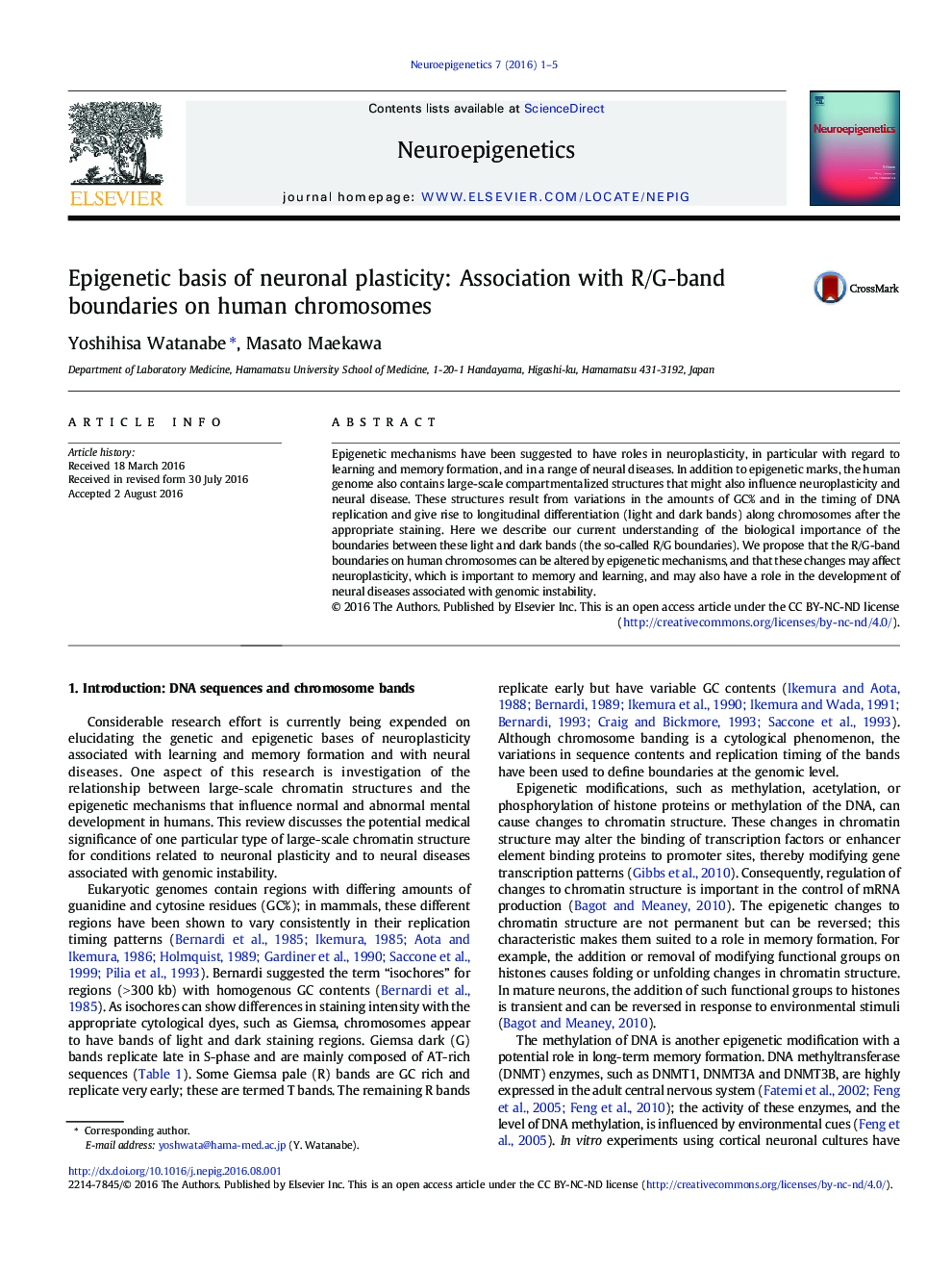| Article ID | Journal | Published Year | Pages | File Type |
|---|---|---|---|---|
| 2823950 | Neuroepigenetics | 2016 | 5 Pages |
Epigenetic mechanisms have been suggested to have roles in neuroplasticity, in particular with regard to learning and memory formation, and in a range of neural diseases. In addition to epigenetic marks, the human genome also contains large-scale compartmentalized structures that might also influence neuroplasticity and neural disease. These structures result from variations in the amounts of GC% and in the timing of DNA replication and give rise to longitudinal differentiation (light and dark bands) along chromosomes after the appropriate staining. Here we describe our current understanding of the biological importance of the boundaries between these light and dark bands (the so-called R/G boundaries). We propose that the R/G-band boundaries on human chromosomes can be altered by epigenetic mechanisms, and that these changes may affect neuroplasticity, which is important to memory and learning, and may also have a role in the development of neural diseases associated with genomic instability.
